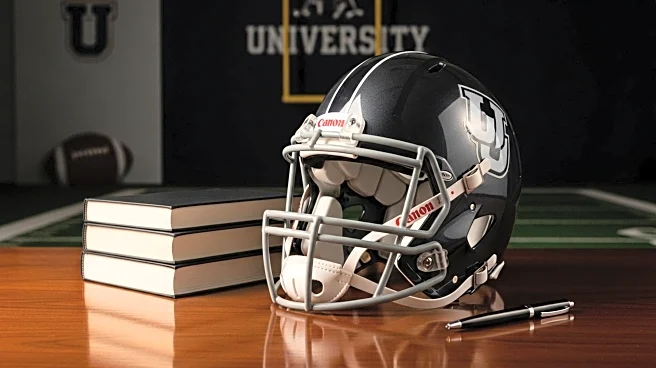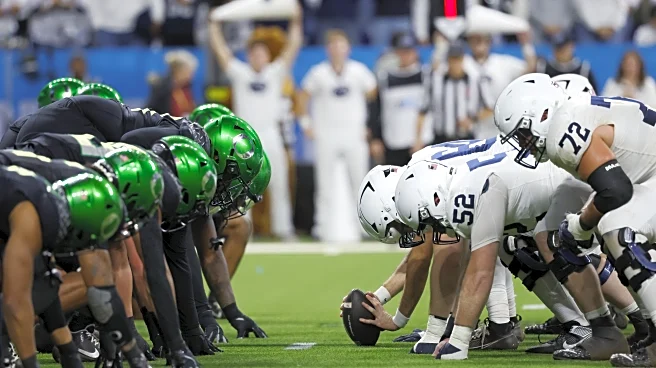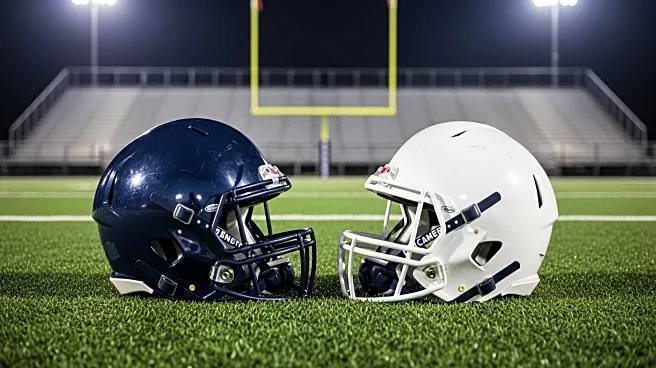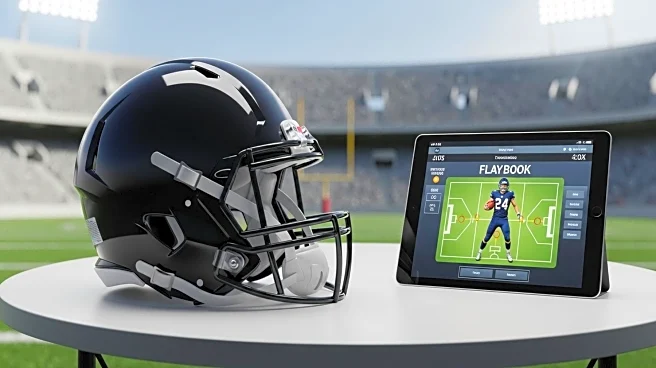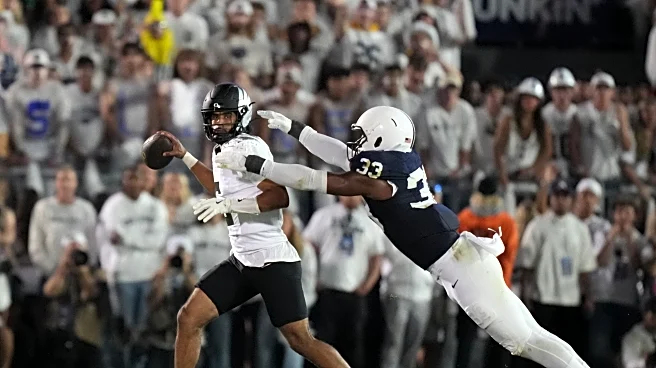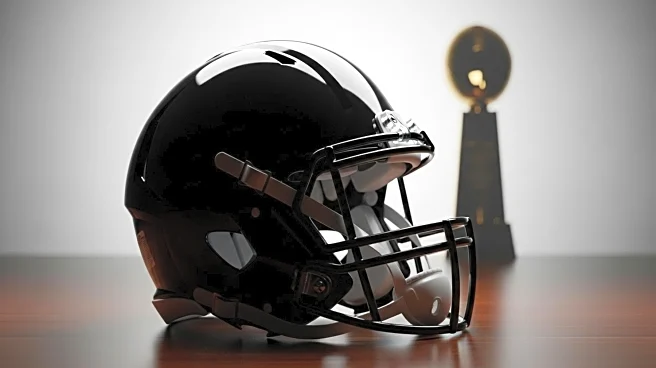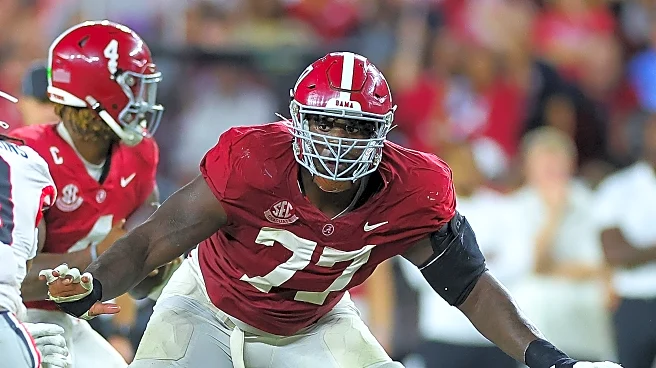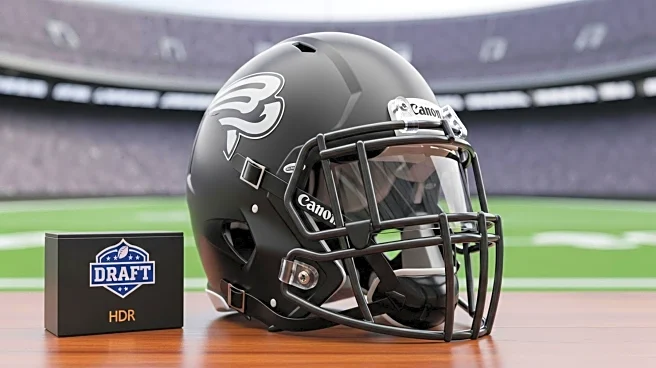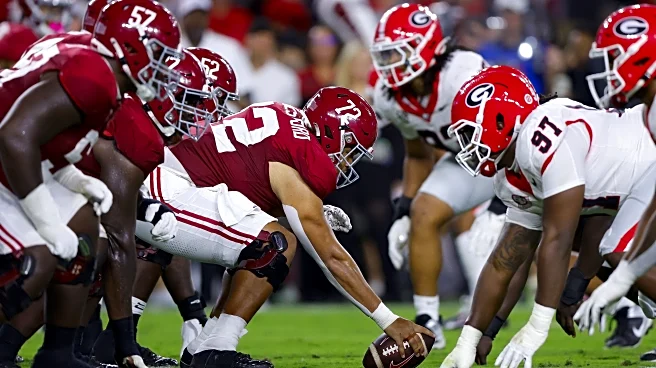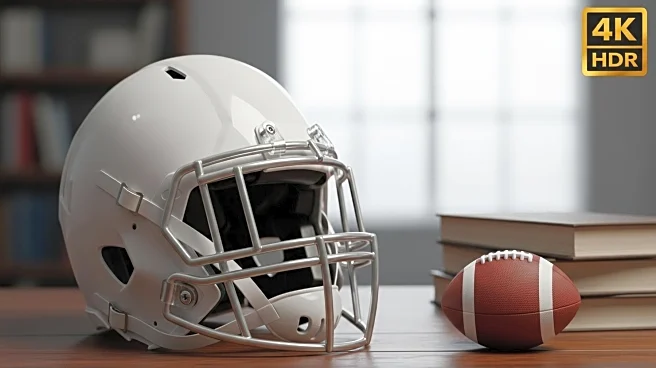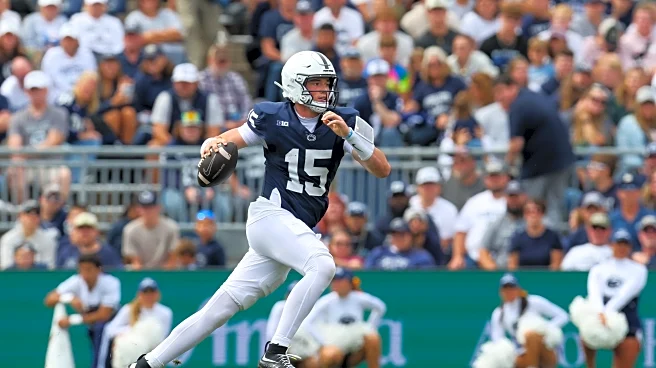What is the story about?
What's Happening?
Drew Allar, the star quarterback for Penn State, has decided to remain with the Nittany Lions for the 2025 season, despite being eligible for the NFL Draft. Allar, who threw for over 3,000 yards and 24 touchdowns last season, was a key player in Penn State's journey to the College Football Playoff Semifinals. His decision to stay was influenced by inconsistencies in his draft stock and his desire to achieve more with his college team. Allar's return is seen as a significant boost for Penn State, which is currently 3-0 and preparing for a major game against the Oregon Ducks.
Why It's Important?
Allar's decision to stay at Penn State rather than enter the NFL Draft has significant implications for both college football and the NFL. For Penn State, retaining a top quarterback enhances their chances of competing for a national championship, especially with the return of other key players like running backs Kaytron Allen and Nicholas Singleton. For the NFL, Allar's choice highlights the growing influence of Name, Image, and Likeness (NIL) deals, which can offer substantial financial incentives for college athletes to remain in school. Allar's NIL valuation is reportedly $3.5 million, which, while less than an NFL salary, provides a lucrative alternative.
What's Next?
With Allar's decision to stay, Penn State will focus on leveraging his skills to pursue a national championship. The team is expected to capitalize on his leadership and experience, aiming for a successful season. Meanwhile, Allar's performance will be closely monitored by NFL scouts, as a strong season could further solidify his position as a top prospect for the 2026 NFL Draft. The dynamics of college athletes choosing between professional opportunities and lucrative NIL deals will continue to evolve, potentially influencing future decisions of other athletes.
Beyond the Headlines
Allar's decision underscores the shifting landscape of college athletics, where financial considerations through NIL deals are becoming increasingly significant. This trend may lead to more athletes opting to complete their college careers, impacting the traditional pipeline to professional sports. Additionally, the decision reflects the strategic choices athletes face in balancing immediate financial gain with long-term career goals and personal aspirations.
AI Generated Content
Do you find this article useful?
